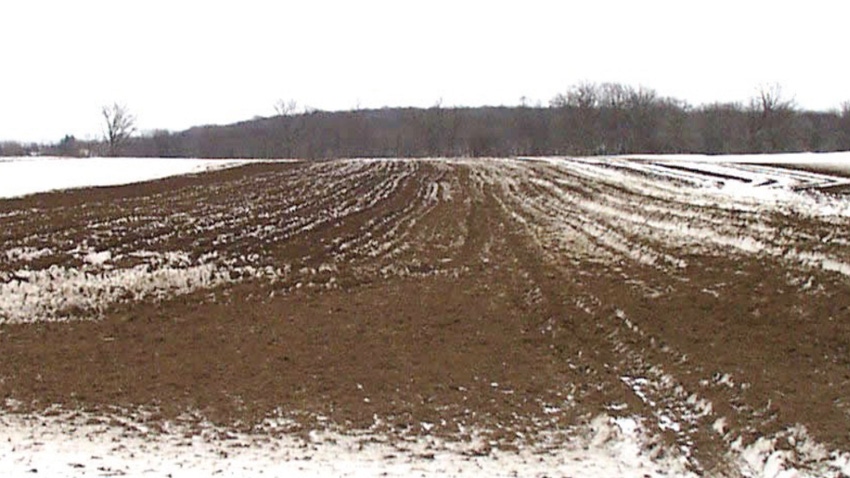January 11, 2024

At a Glance
- Adhere to local regulations governing winter manure application.
- In Iowa, rules for winter manure application are based on the date and condition.
- Applying manure directly onto snow-covered fields poses a risk of nutrient runoff when the snow melts.
The challenges associated with applying cattle manure are bigger during winter. Adopting best practices to maximize nutrient use and safeguard water resources is crucial. Dan Andersen, Iowa State University Extension ag engineering specialist, offers some critical considerations for winter application. His Extension and research program focuses on manure management and use.
“Familiarize yourself with and adhere to local regulations governing winter manure application,” he advises. “Iowa prohibits liquid manure application from confinement livestock operations with more than 500 animal units on snow-covered ground from Dec. 21 to April 1 and on frozen ground from Feb. 1 to April 1.”
While solid manure application isn’t prohibited by Iowa law, careful consideration should be given to minimizing negative impacts on water quality to protect the state's waters.
“For a cattle operation, this means how the law impacts you depends on your operation and the manure management system you use. The law doesn't prohibit manure application if you work with solid manure, like a bedded pack,” Andersen says. “However, all manure applications must prevent water quality violations,” so applying from a deep pit or other liquid or slurry manure system will be restricted.
Permits and plans
If your facility has a National Pollutant Discharge Elimination System permit or a Natural Resources Conservation Service comprehensive nutrient management plan, be sure to check restrictions specific to your operation in these documents. Typically, both will prohibit winter manure application for all types of manure, both solid and liquid.
Rules for winter manure application have two parts: a date and condition. Both components must be true for liquid and slurry manure application to be prohibited. So, when the calendar date of Dec. 21 is quickly approaching, it’s unlikely that the ground will be snow-covered (defined as 1 inch of snow or 0.5 inch of ice on the soil surface). As a result, liquid manure application would still be allowed until snow cover occurs.
Understand snow conditions
Applying manure directly onto snow-covered fields poses a risk of nutrient runoff when the snow melts, especially if melting occurs quickly, Andersen says. Instead, wait to apply until after snowmelt, or choose alternative manure management strategies. Applying manure on frozen ground is also discouraged, as the frozen surface inhibits absorption, increasing runoff potential.
“Timing is key. It’s best to apply manure when limited snow is present and quick melts aren't expected,” he advises. “Slow melting encourages water infiltration and absorption of manure nutrients into the soil.”
If applying solid manure is necessary when snow is present, choose fields that are relatively flat with less snow accumulation. Increase buffer or setback distances around field edges to reduce the risk of nutrient movement from the field.
Thoughtful land-use choices
Assessing land-use choices is pivotal in winter manure management. Avoid applying manure on steep slopes or areas prone to poor drainage, as these parts of fields increase the likelihood of runoff. Choose fields with good water-holding capacity to minimize the risk of nutrient loss.
Also, cover crops can help. “This is another reason to consider planting cover crops. Cover crops capture excess nutrients and protect the soil from erosion during winter months,” Andersen says. “Crop residue cover offers these main benefits — it helps hold the soil in place, slows down runoff, reduces erosion, and acts as a filter to help hold dislodged soil and manure particles.”
Crop residue can also capture snowfall and hold it in the field. While it takes approximately 10 inches of snow to make an inch of water, ice-crusted soil water intake is often slow.
Protect water quality
You can prioritize water quality protection by maintaining setback distances from waterbodies and sensitive areas, Andersen adds. Using vegetative buffers as setbacks helps prevent nutrient runoff from entering waterways.
Incorporating manure into the soil soon after application is another effective strategy, reducing the risk of surface runoff and enhancing crop nutrient absorption. Where possible, maintain grass or cover crop buffers downslope of manure-applied areas to slow any runoff and ensure solids in the water settle out before trickling away. Leave a setback area around field borders to reduce the risk of manure nutrients leaving the field.
“Adopting these best practices for manure application in winter will enhance nutrient management and contribute to protecting our water resources,” Andersen says. “While research consistently shows greater potential risk of nutrient loss from winter manure application, studies demonstrate loss is often related to quick snowmelt or rainfall on frozen soils. With no snowpack and low chances of rain, the risk of nutrient loss is lessened.
“When making manure application decisions, stay informed of the weather forecast and be proactive to changing weather conditions.”
For more information, visit the Iowa Manure Management Action Group at extension.iastate.edu.
About the Author(s)
You May Also Like






